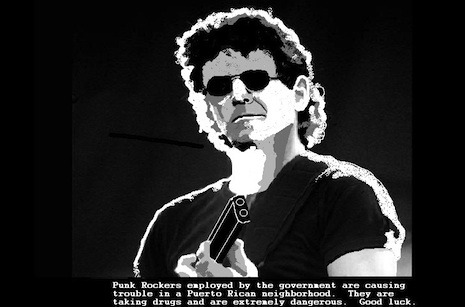
Lou Reed Street Hassle (above and below)
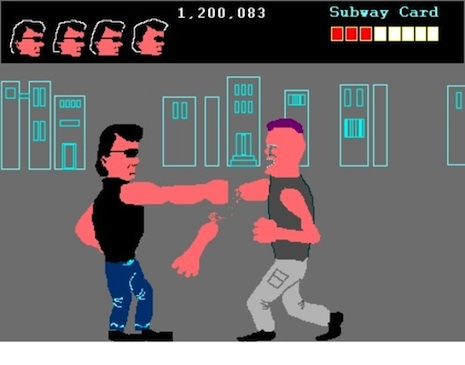
Eraserhead

Barry Lyndon (natch)
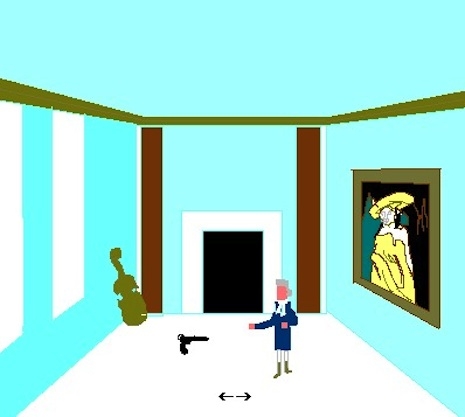
via Dimension Arcade Thanks, Ian Raikow

Lou Reed Street Hassle (above and below)

Eraserhead

Barry Lyndon (natch)

via Dimension Arcade Thanks, Ian Raikow
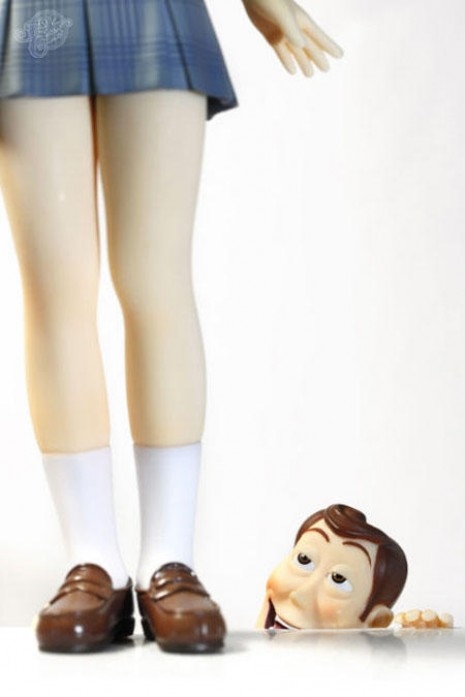
Well, if these images found on a popular Chinese web site are to be believed…he sure is. Yikes! I wonder if Woody is any relation to this guy?

More, um, er…images after the jump…
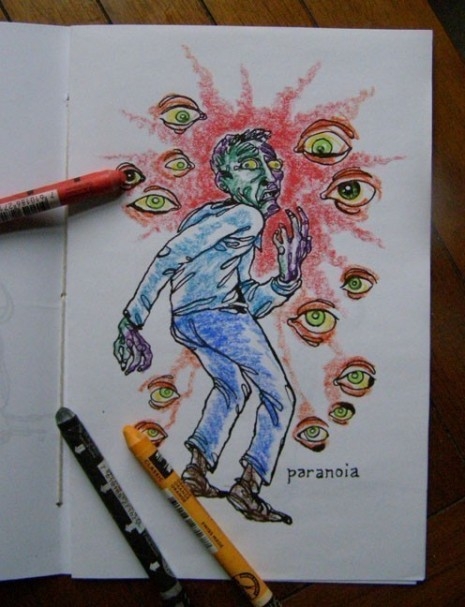
Methinks this coloring book is the perfect holiday gift to teach your batshit crazy relatives and friends to color inside the lines. Etsy seller Daupo‘s Disorders: A Coloring Book retails for $8.00.
Mail it anonymously to a loved one, or use it as a tool in therapy. Use the gentle, repetitive task of coloring in the nice shapes to wile away your obsessive/compulsive episodes. Or just sit there and admire the subtly-conveyed struggle and desperation.

More after the jump…
Commenting on the shocking findings on gay hate crimes from the Southern Poverty Law Center, author, sex advice columnist and co-founder of the “It Gets Better” project, Dan Savage eloquently calls out CNN and the rest of the mainstream news media for giving TV time to hateful assholes like Tony Perkins in the name of some supposed “objectivity.” As if, says Savage, there were two legitimate sides to the issue of gay and lesbian rights.
Bravo! Once again I find myself filled with intense admiration for the numerous ways Dan Savage influences our culture. If he didn’t exist, we’d be forced to invent him.
Via Alternet
Ian Campbell sez: “This is a music video I made cut up from a bunch of 70s & 80s movies and a track from france’s MAGMA - frenetic prog rock jazz fusion type stuff sung in a made up language.”
I like it.
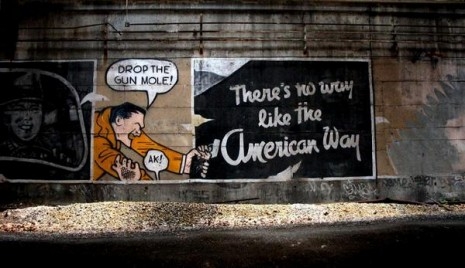
The secret cities beneath our cities. What we leave behind.
This haunting video was shot by Charles le Grand. It’s all video, no stills.
Charles describes the history of the ‘Freedom Tunnel’:
Under Manhattan’s Upper West side, runs the “Freedom” Tunnel. Built in the 30’s by Robert Moses, the passage boasts legendary graffiti murals and piles of debris remaining of the past homeless city era. After using it for only a couple of years, Amtrak discontinued the line and left a massive cavern which later became a shelter for street people. Progressively, the tunnel turned into a veritable underground metropolis where thousands of homeless were living in organized communities underneath the city’s skin.
The tunnel also became a prime spot for graffiti artists. Chris Pape, aka Freedom, was one of the pioneers and his work inspired the name of the tunnel. “Freedom” painted immense murals utilizing the unique lighting provided by the ventilation ducts, turning the tunnel into an extraordinary underground art gallery. Some of his most notable paintings survived for decades and are still conspicuous today (“Venus de Milo”, the “Coca-Cola Mural”, Dali’s “Melting Clock”,a self-portrait featuring a male torso with a spray-can head, etc.).
In 1991, Amtrak decided to reopen the tunnel. The shanty towns were cleared out by the police and homeless were evicted. Although deserted, the tunnel is now an active train line and a stunning experience for urban explorers.

When I read Wired editor Chris Anderson’s 2006 best-seller, The Long Tail, I was still professionally involved with book publishing and DVD distribution, and called total bullshit on his theory. Anderson’s central thesis in the book, that unlimited digital “shelf space” would enable long term profits on “back catalog” items, I can tell you for certain, is absolute nonsense, for all but retailers of Amazon’s size (can you name another?). Comforting fiction to corporations, companies and individual who would sell their wares on Amazon or iTunes, perhaps, but fiction nonetheless. The public always wants the “new” thing and after a point, books and movies just become too dated for anyone to care about, let alone pay for.
Even more to the point, it seemed like Anderson, when he wrote The Long Tail, had scant awareness that Bit Torrent was about to do for the Hollywood bottom line what it had already done for the music industry’s. Presuming people were going to actually pay for stuff, was the book’s most fatally flawed assumption. As far as this reader was concerned, six months after The Long Tail appeared on the best seller charts, its thesis was pretty much D.O.A. (as Anderson kind of tacitly admitted to with the title of his next book, Free: The Future of a Radical Price in 2008).
Certain things, even if they were priced at a dollar, no one would buy them. Human psychology, especially that of the subgroup “American consumer” would also make a calculation “too cheap = it must suck.” There is also an opportunity cost associated with this internal calculation, that of how do you want to “spend” your free time and of other things competing for your attention, be they “real life” or more entertainment choices. “New” usually wins, because it also happens to be what most other people are interested in, and so there is the “social currency” aspect of what what entertainment and infotainment provide, which is to say, if you haven’t seen it, you can’t have an opinion about it and so you are left out of the conversation.
But what does any of this have to do with Adolph Hitler still being alive? Not a blessed thing, I grant you, but here’s a free, little known regional 1963 cult film, The Yesterday Machine with unintentionally campy Cold War overtones, teenagers, rock and roll, a Nazis scientist on the loose in America, whack physics that stoned nerds could argue over for hours and… so much more.
Here’s a description of The Yesterday Machine, taken from The Classic Sci-Fi blogspot:
Quick Plot Synopsis
Margie, a college baton twirler, practice her moves while her boyfriend, Howie tries to fix a balking fuel pump. It’s getting late, so he gives up and they walk through a woods to get help. They encounter two civil war soldiers who shoot Howie. Margie is unaccounted for. Howie’s wound and Margie’s disappearance has the local police and a reporter asking questions. The bullet in Howie, and a cap found at the scene were authentic civil war items. This causes Lt. Partane to recall an odd experience in WWII where old men prisoners were, by the records, actually young men. The camp’s Kommandant was a rogue physicist, but was never found. While reporter Jim and Margie’s sister Sandy explore the scene, they are transported to Dr. von Hauser’s underground lab. Sandy and Margie are reunited in a dungeon cell. Von Hauser lectures Jim, (at some great length) about his science. The two rehash the old arguments over Nazi machiavellianism, which gets Jim tossed into an adjacent cell. They try to talk Didyama, (a female minion from ancient Egypt) into helping them escape. One nazi guard enters the women’s cell with ill intent. Didyama stabs him in the back, but he chokes her to death before he dies. The women get out and let Jim out. In a showdown back in the lab, Jim shoots the other nazi guard and puts two bullets into the time machine before fleeing. Coming up through a secret hatch in a private graveyard, Jim, Sandy and Margie meet Lt. Partane and other policemen. They hear the time machine start up again. Partane goes down to the lab. Von Hauser shoots, but Partane hits von Hauser, who slumps into the time machine’s chair and fades out to some other time. Partane destroys the machine. He gives a speech about man not being ready for such technology. The End.Why is this movie fun?
The plot unfolds with such unHollywood quirkiness, that it keeps viewer interest up. The story opens with a college coed twisting and twirling her baton to old style rock and roll. From the get-go, FY is different. Also, Jack Herman’s flamboyant acting as Nazi scientist Ernst von Hauser is entertaining.Deeper Question—Overshadowed by its many shortcomings, YM still manages to raise an interesting question. What if time travel was done by villains? All the usual noble ethics of non-interference would be in the bin. Von Hauser wanted to give his favorite Führer a few more months so that superweapons under development could be finished. Von Hauser talks wistfully of a Reich that would continue more than a thousand years. Why not? With his time machine, the regime could enact as many do-overs as necessary. But, what if TWO powers had time travel? Who’s mucking would prevail?
Science Lecture—Often enough, the villain monologues to the hero for no logical reason other than the scriptwriter’s need for some exposition. Von Hauser gives Jim an extended science lecture in front of a chalk board, to explain time travel to him. The briefer version runs like this: if you speed up light so it goes faster than the (um) Speed of Light, it begins to move backwards in time. The more you speed it up, the more quickly backwards time travels. Just how von Hauser does this with some surplus radio parts is not explained.
Sound good? The Yesterday Machine, all 78 minutes of it, is free to watch on YouTube. If you like this kind of stuff, toke up and watch the motherfucker. But I wonder, if you had to pay a $1 for this, would you?
Thanks Jaye Beldo!

Pulitzer prize winning food writer Jonathan Gold’s annual list of 99 essential Los Angeles eateries is a big deal for us Angelenos. The man has exquisite taste and a feel for this great city like few other contemporary writers. This year a few motivated foodies have created more user-friendly forms of said list, making it easy for us all to eat our way across the city over the holidays. There’s a Google Maps version here and a spreadsheet here. I’d like to personally recommend the absolutely over-the-top temple of fat, Animal and the revelatory Oaxacan cuisine of Gueleguetza where the Laner family will be having Pavo en Barbacoa this Thanksgiving.
via Fishbowl L.A., thanks !

Beautiful time-lapse photography of the Aurora Borealis over Tromsø, in Norway, by Tor Even Mathisen.
A webcam is available to view the skyline over Tromsø here.
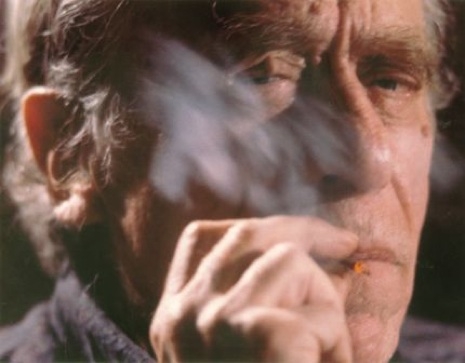
It’s great to see that Los Angeles is finally starting to properly celebrate the life of one of her greatest writers, Charles Bulowski. Presently on exhibit at The Huntington is a show called “Charles Bukowski: Poet on the Edge,” drawn from the archive of his papers donated to the museum by his wife, Linda Lee Bukowski, in 2006. The exhibit is being held in the West Hall of the Library and continues through Feb. 14, 2011.
Among the rare items on view in the exhibition will be first editions of his works, including Ham on Rye (1982), the autobiographical novel about his brutal childhood and young adulthood; Factotum (1975), the fictional account of his succession of low-end jobs; and Barfly (1984), the screenplay he wrote for the 1987 film starring Mickey Rourke and Faye Dunaway. Corrected typescripts of poems and of the novels Pulp (1984) and Hollywood (1989) will also be on view. There will be original drawings by Bukowski, correspondence and fan mail, and large-format printings of his poems produced by the Black Sparrow Press and other fine printing houses. scarce, important “little magazines,” which were the first to publish Bukowski’s works, will include such publications as Wormwood Review, The Outsider, The Limberlost Review, and Runcible Spoon. More famous (or infamous) magazines like Oui and High Times will show a more lucrative aspect of Bukowski’s craft.
In addition, Linda Lee Bukowski is graciously lendng a number of iconic items, including Bukowski’s manual typewriter, an original oil portrait by John Register, and very scarce early books, including Flower, Fist & Bestial Wail (1960) and It Catches My Heart in Its Hand (1963).
Charles Bukowski continues to attract a huge following of readers who feel a deep connection to the writer who spoke for the downtrodden and disaffected. Writing as an outsider, on the periphery of both society and the literary establishment, Bukowski knew that, for him, “the place to find the center is at the edge.”
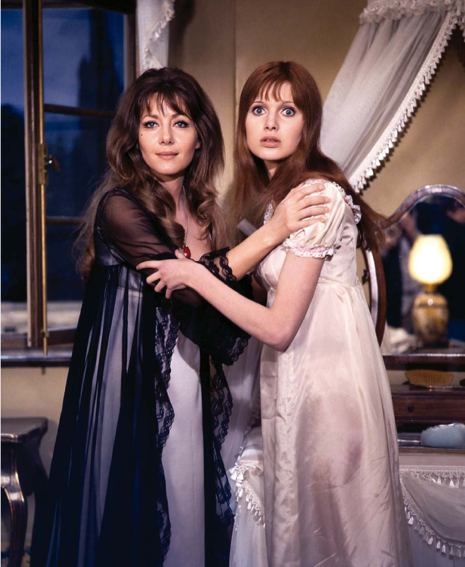
Above, Ingrid Pitt, left and Madeline Smith in The Vampire Lovers.
Sad news from London today as word of the death of actress Ingrid Pitt, star of several classic Hammer horror films, reaches us. Pitt died just two days after collapsing en route to a birthday celebration in her honor, at the age of 73.
Ingrid Pitt was best known for her risque roles in the Hammer “vampire lesbian” films, Countess Dracula and The Vampire Lovers. She was one of the first, if not the first scream queen to go starkers onscreen. Both of these films were—unbelievably—often shown uncut on “chiller theatre” type TV broadcasts in the 1970s. If you are a male of a certain age (ahem) and were a big fan of horror films growing up, there is a very good chance that Ingrid Pitt’s extremely lovely—and blood-smeared—breasts were the first boobies you ever saw (Can I get a few “amens” in the comments?).
Previously on Dangerous Minds:
Vampire Lesbians of Hammer

Haymarket, Edinburgh
I once met Ray Davies in a bar. I literally bumped into the great man just as I was exiting the toilet. Which isn’t the most auspicious place to meet a pop legend - between cubicle and urinal - or to announce an undying love for the man’s god-like talent. But ‘carpe diem’ and all that, so I did, and also said how brilliant I thought his film Return to Waterloo. Considering the amount of daft punters, myself included, he no doubt has to deal with on a daily basis, The Kinks’ genius was exceedingly gracious and kind.
Waverley, Edinburgh
I guess it was because I was rather middle-aged in my teens that unlike my contemporaries, who were out drinking, taking drugs and enjoying the folly of youth, I was at home the Friday night Return to Waterloo aired on telly. I’m glad I was, for Davies film was an incredible piece of TV, and unlike anything I’d seen before.
Looking back, it was a daring commission by the broadcasters, Channel 4, for here was a first time director’s film with no real plot, no dialog, just a series of vignettes tied together by a cycle of songs, about the day in the life of a Traveler (played by the superb Kenneth Colley) - his hopes, his fears, his desires, his failings, his loss. Doesn’t sound like much, does it? But believe me, it was.
Waterloo Underground
The film erupts out of a dark railway tunnel into a summer’s day. The Traveler wanders a railway station, through its crowds, then follows a girl with blonde hair, a newspaper headline with identi-kit picture - a rapist / murderer is on the loose. The Traveler follows the blonde (a memory of his missing daughter? a possible victim?) down into the underground, he passes a Busker (Davies, himself), and follows the girl along the platform. An underground train approaches. The Traveler’ nears the platform’s edge, its lights bleach out his face, and suddenly, as the day’s events rattle by, we return to the beginning.
It’s an opening that makes you sit up and take notice, as we are presented with several possible scenarios. Are we watching a murder mystery? A thriller about a missing daughter? A tale of sex/adultery/incest? It soon becomes clear these story-lines are unimportant, as what Davies is doing is something far more clever, subtle and personal.
Davies was thirty-nine when he made Return to Waterloo and it is filled with the disillusion of a man creeping towards his middle age and possible mid-life crisis. At the time, Davies was splitting up from his lover, Chrissie Hynde, with whom he had a daughter, and the film is tinged with a remorse for family life, for things that could have been, the pain of love lost. The question is how much does the Traveler represent Davies? How much is it a refraction of his own feelings?
Dear lonely heart, I wish things could be the way they were at the start…
But as we see, they can’t. Actions, or the lack of them, bring their own unexpected results.
Clapham Junction
Ken Colley has a list of credits from The Music Lovers, through Ripping Yarns to Star Wars and Return to Waterloo. He is one of cinema’s and television’s greatest character actors - a far better performer than most leading men. Colley does what many actors forget to do, he acts with his eyes. When you watch Colley, you know what his character is thinking, what he’s feeling, what is going through his mind.
The train journey is a metaphor for the Traveler’s life, in much the same way as Sylvia Plath once used it to describe her pregnancy:
Boarded the train there’s no getting off
Nearing Waterloo Station, the Traveler fantasizes of a way of “getting off” - by giving his younger self the keys to his future, here’s what will happen, kid, here’s what you can do.
Lime Street, Liverpool
Did you know that Waterloo Sunset was originally Liverpool Sunset? It was Davies’ paean to the city he loves:
“Liverpool is my favourite city, and the song was originally called Liverpool Sunset. I was inspired by Merseybeat. I’d fallen in love with Liverpool by that point. On every tour, that was the best reception. We played The Cavern, all those old places, and I couldn’t get enough of it.
“I had a load of mates in bands up there, and that sound – not The Beatles but Merseybeat – that was unbelievable. It used to inspire me every time.
“So I wrote Liverpool Sunset. Later it got changed to Waterloo Sunset, but there’s still that play on words with Waterloo.
“London was home, I’d grown up there, but I like to think I could be an adopted Scouser. My heart is definitely there.”
Waterloo Station
As we approach our destination, there’s a question: why did Davies call his film Return to Waterloo? What was he returning to?
Millions of people swarming like flies ‘round Waterloo Underground
But Terry and Julie cross over the river
Where they feel safe and sound
And they don’t need no friends
As long as they gaze on Waterloo sunset
They are in paradise
This description from Waterloo Sunset does not fit with Britain in the 1980s. The sixties promise of “paradise” has been bartered and sold, by the then Prime Minister Margaret Thatcher. Tory policies during that decade knew the price of everything, but the value of nothing. But let’s not get too political, for the next song is as much about a private heartbreak as it is about public disillusion.
Now all the lies are beginning to show,
And you’re not the country that I used to know.
I loved you once from my head to my toe,
But now my belief is shaken.And all your ways are so untrue,
No one breaks promises the way that you do.
You guided me, I trusted you,
But now my illusion’s shaken.
...We had expectations, now we’ve reached
As far as we can go.
London
Return to Waterloo reaches its destination, a brilliant and original film, which leaves one wondering why Davies hasn’t written and directed more for film and television?
A few years ago, a friend told me Ray Davies allegedly has this burning ambition to write a sitcom - now wouldn’t that be something?
Excerpts from Ray Davies’ ‘Return to Waterloo’ after the jump…
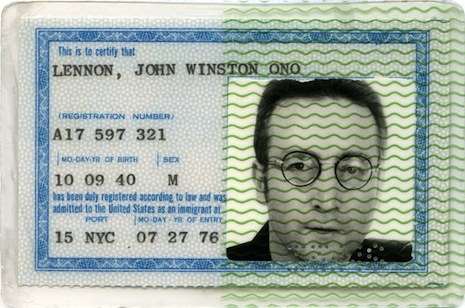
I haven’t managed to sit down and watch this yet, but I hear it’s great. Join me, won’t you ?
Watch the full episode. See more American Masters.
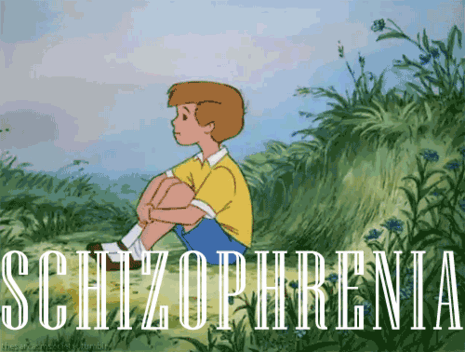
This is sort of a dark and depressing take on mental disorders by Winnie the Pooh and characters. I don’t know about you, but these kinda gave me a serious case of the sads.

More after the jump…
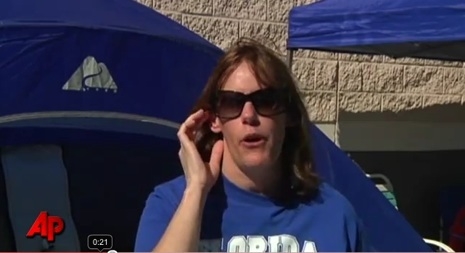
Lori Davenport of St. Petersburg, Florida is the first in the nation to camp outside a Best Buy for this year’s Black Friday sales. The retailer gave her an iPad for her dedication.
Watch this. This fuckin’ says it all. And it says it so much better than any commentator could. Kudos to whoever produced this segment for leaving out the voice over and just letting this batshit crazy lady talk about “firstness.”
This is POETRY (of a fashion). American poetry.